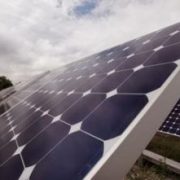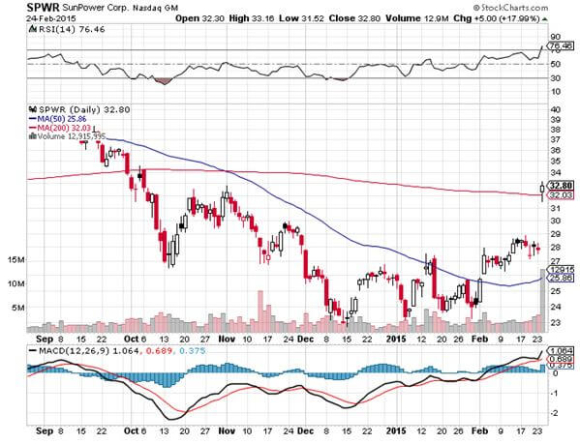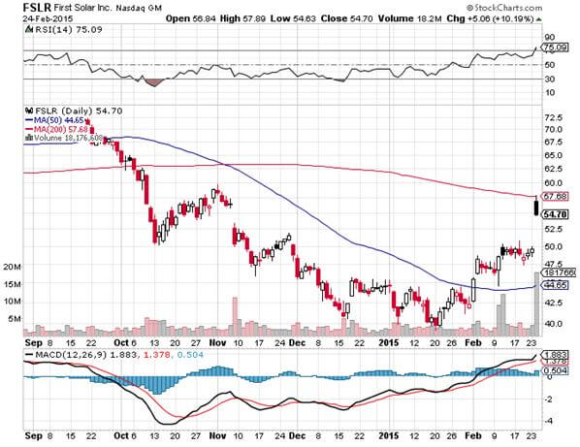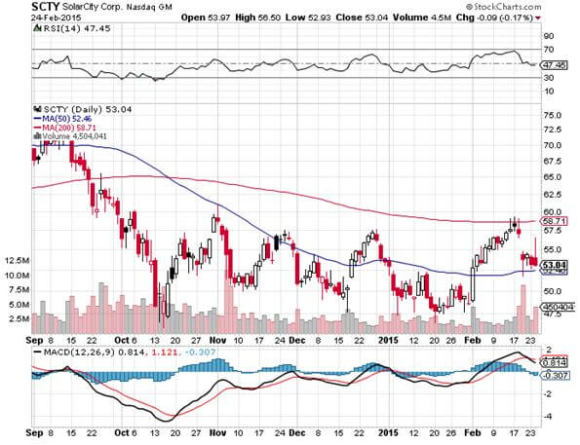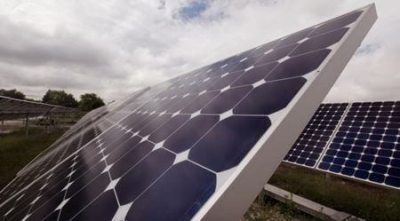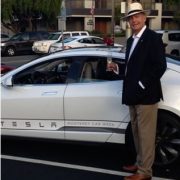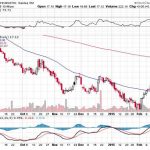Long time solar observers were stunned by the news that First Solar (FSLR) and Sunpower (SPWR) were teaming up to create a joint venture.
The stock market certainly got the message. Sunpower rocketed by 18%, while First Solar soared by 17%.
Imagine Macy?s merging with Gimbels, Coke tying up with Pepsi or the Los Angeles Dodgers teaming up with the San Francisco Giants?
It?s a little more complicated than that.
The move further convinces me that solar is one of the few industries that could offer investors a ten-bagger over the coming decade. Revenues are soaring, costs are plunging.
Throwing the fat on the fire are generous government subsidies that create a massive incentive for consumers to go solar by the end of next year.
The entity that (FSLR) and (SPWR) are forming is known as a ?yieldco.?
A yieldco is a publicly traded company that is formed to own operating assets that produce a predictable cash flow. Separating volatile activities (like research and development and construction) from stable and less volatile cash flows of operating assets can lower the cost of capital.
Yieldcos are expected to pay a major portion of their earnings in dividends, which may be a valuable source of funding for parent companies which own a sizeable stake. They are commonly used in the energy industry, particularly in renewable energy to protect investors against regulatory changes.
Yieldcos are in effect first cousins to other high yielding securities like Master Limited Partnerships (MLPs) and Real Estate Investment Trusts (REITs). Yieldcos give investors a chance to participate in renewable energy without many of the associated risks.
The announcement came on the heels of blowout earnings announced by the two companies. SunPower said it expects to install another 215 megawatts of generation in 2015 and that its project pipeline now totals more than 4,000 megawatts.
First Solar became the first solar photovoltaic (PV) maker to install 10,000 megawatts of capacity last month. Its project pipeline exceeds a monstrous 2,600 megawatts.
A 30% tax credit on any alternative energy investment is set to expire at the end of 2016. I think this will trigger the mother of all stampedes by consumers to buy solar systems while they can still get the government to pick up one third of the tab.
The entire solar industry looks attractive here. Collapsing oil prices has had a leveraged effect on solar shares, dropping them a heart stopping 40% in only three months.
Heaven knows investors are starved for cheap stocks these days.
There is one cautionary note to add here. The government subsidies that help float the company expire in 2017, making the entire proposition financially less attractive. That is, unless they get renewed.
Think President Hillary.
The only things that would save them are dramatically higher conventional energy costs. However, right now energy costs are heading the opposite direction, thanks to fracking and a well-publicized war for market share at OPEC.

